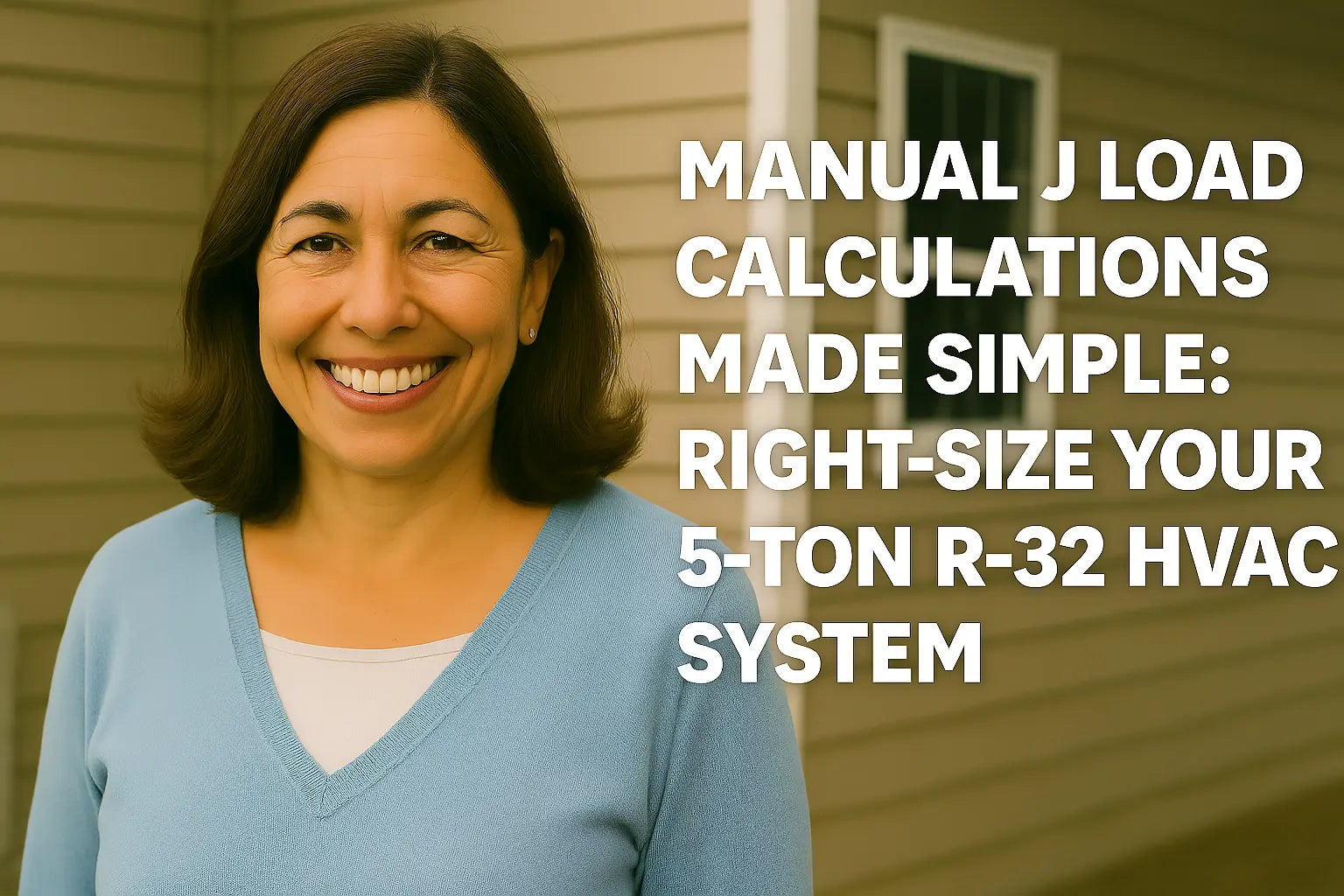Hello From Samantha 💁
Hey there, home comfort champions! Samantha here, ready to break down one of the most crucial—and often misunderstood—steps when it comes to your 5-ton R-32 AC and gas furnace system: Manual J load calculations.
Getting your system size right isn’t just HVAC nerd stuff—it directly affects your comfort, energy bills, and equipment longevity. Too big? You’ll waste energy and money with constant on/off cycles. Too small? Your system will struggle, run nonstop, and leave you hot or cold.
Don’t worry though, I’ll walk you through the essentials so you can understand what pros do and even try a rough calculation yourself if you want.
Alright, time to size up your home comfort game! 🔥❄️
What Is Manual J and Why Is It Important? 📏
Manual J is the industry-standard method for determining the heating and cooling load your home needs. It looks at your home’s size, insulation, windows, doors, local climate, and even the number of occupants to calculate how many BTUs per hour your HVAC system needs to keep you comfy year-round.
Why does it matter? Well, choosing the wrong size system leads to headaches:
-
Oversizing causes short cycling — your system turns on and off rapidly, wasting energy and causing premature wear.
-
Undersizing means your system runs all the time, struggles to maintain temperature, and wears out faster.
The good news? Manual J takes the guesswork out, so you get a system that’s “just right.” To learn more about Manual J’s role in home comfort, the Air Conditioning Contractors of America (ACCA) provide an excellent resource.
Manual J: What Goes Into the Calculation? 🧮
Here’s what the calculation considers:
-
Home dimensions: Each room’s length, width, and height.
-
Insulation: Wall, ceiling, and floor R-values.
-
Windows and doors: Type (double pane? Low-E?), size, and sun exposure.
-
Air infiltration: How drafty your home is.
-
Local climate: Based on your geographic location.
-
Internal gains: Heat from people, lighting, and appliances.
By putting all this together, Manual J tells you your home’s exact heating and cooling demand in BTUs per hour. Typically, a 5-ton system delivers about 60,000 BTUs cooling per hour, but your actual needs might be higher or lower depending on your home's specs.
To see how climate impacts your load, check out the U.S. Department of Energy’s Climate Zone Map.
Step-by-Step Manual J Calculation Guide 🔍
1. Measure Your Home
Get the length, width, and ceiling height of each room. Don’t forget closets and hallways—they add to your load too!
2. Determine Insulation & Window Specs
Gather info on your insulation type and thickness. Identify windows’ type and shading. This info influences heat gain and loss significantly.
3. Identify Your Climate Zone
Your climate affects heating and cooling loads. You can quickly find your zone via the Energy.gov Climate Zone page.
4. Calculate Heat Gain and Loss
This is the tough part! Heat gain (in summer) and heat loss (in winter) are calculated for each room, based on your inputs. Professionals use software like Cool Calc or Elite Software to do this accurately.
5. Factor in Air Leakage and Internal Gains
Drafty homes have higher heating and cooling demands. Add in heat from people, cooking, and appliances to get a full picture.
6. Add it All Up
Sum all rooms’ loads to get your total BTU requirements. This final number guides your system size choice.
Why You Should Leave Manual J to the Pros (Mostly) ⚠️
Sure, you can do a rough estimate yourself, but certified pros have the tools and experience to get it just right. Mistakes can lead to costly oversizing or undersizing.
If you want to try it yourself, Service Titan’s Manual J Online Calculator is an easy, reliable option with an industry-accepted methodology.
Remember, Manual J is often used with Manual D (duct design) and Manual S (equipment selection) for a complete, optimized HVAC system. For those complex calculations, it’s best to get professional help.
How Proper Sizing Saves You Money and Headaches 💸
Oversized units waste energy through short cycling, which according to the U.S. Department of Energy can increase electricity costs by up to 25%.
Correctly sized systems run longer cycles, maintain steady temps, control humidity better, and reduce repair costs. Plus, many manufacturers require proof of Manual J sizing for warranty coverage — a smart reason to do it right the first time!
Samantha’s Outro 🎉
You did it! You’ve got the scoop on Manual J load calculations and why they’re the secret sauce for sizing your 5-ton R-32 AC and gas furnace system perfectly. Getting this step right saves you big bucks on energy, prevents headaches from oversized or undersized equipment, and helps you enjoy consistent comfort all year.
If you want to explore the best 5-ton R-32 systems ready to match your Manual J results, don’t forget to check out The Furnace Outlet’s 5-Ton R-32 AC & Gas Furnace collection — their lineup makes choosing a breeze.
Curious about handling refrigerant for a 5-ton system? Visit my guide: A Homeowner’s Guide to Safely Handling R-32 Refrigerant in 5-Ton Systems.
Whether you’re doing a rough DIY estimate or calling in a pro, understanding Manual J empowers you to make smart decisions. Got questions or want to dive deeper into HVAC sizing, duct design, or energy savings? I’m always here to help you stay comfy, efficient, and savvy.
Thanks for spending time with me! Here’s to perfectly sized, energy-smart, cozy homes everywhere. 💖
— Samantha, Home Comfort Advisor







